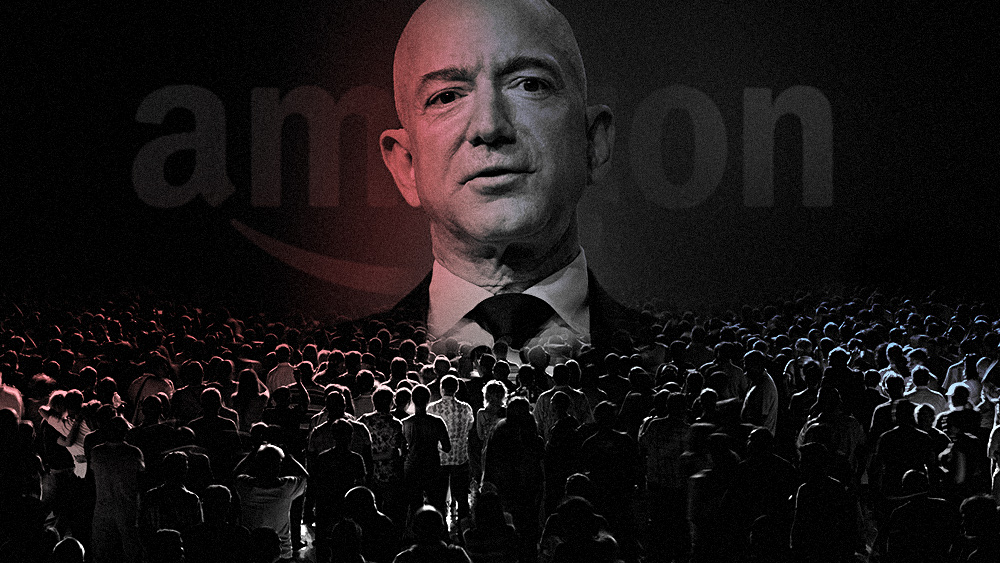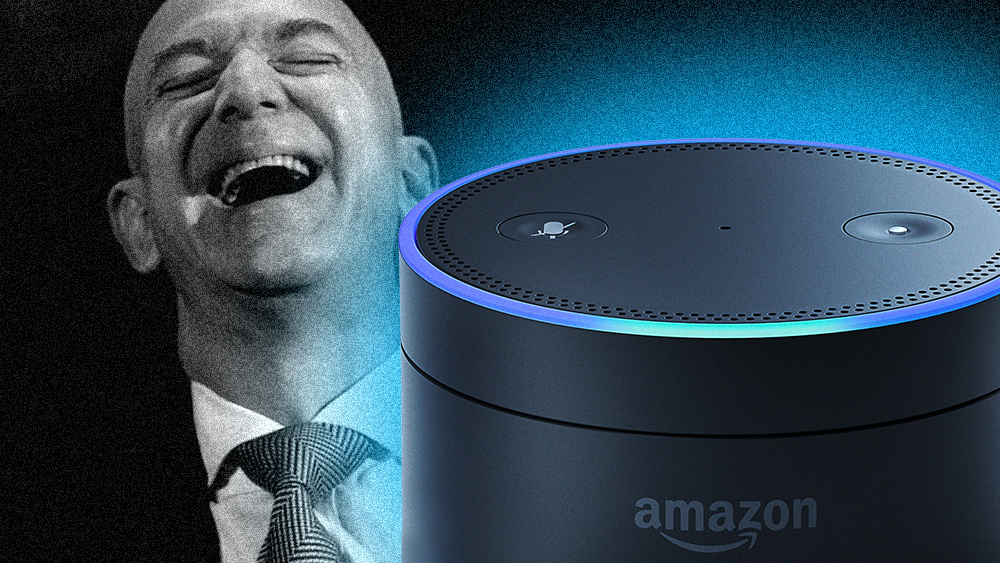Amazon’s warehouse robots are injuring the human employees who are forced to work alongside them
01/06/2020 / By Ethan Huff

This past year, Amazon more than doubled the number of robot “drives” it uses to move goods in and out of its delivery fulfillment warehouses. But these robotic vehicles reportedly aren’t meshing too well with the human employees that are being forced to work alongside them, many of whom are suffering serious injuries while trying to complete their shifts.
Amazon’s more than 200,000 roving robots, each of which weighs about half a ton, are creating so many problems for human employees that a new report published by The Center for Investigative Reporting found that serious injuries have quadrupled at Amazon facilities over the past four years.
After first being introduced at Amazon’s warehouse facility in Tracy, California, these robot drones were quickly implemented at most other Amazon warehouses in an effort to boost efficiency while reducing human labor. But the human impact has been disastrous.
“They weigh a lot,” Amazon worker Amanda Taillon is quoted as stating just prior to the most recent pre-Christmas shipping rush. “When you’re out there and you can hear them moving around, but you can’t see them, it’s like, ‘Where are they going to come from?’ It’s a little nerve-racking at first.”
Taillon, who works at an Amazon facility in Connecticut, says that part of her job involves suiting up with a lighted utility belt and entering the “cages” where these warehouse robots are doing their pre-programmed tasks. This suit she wears tells the robots to stop whatever they’re doing and not run over her while she picks up fallen toys or relieves traffic jams.
But the setup isn’t foolproof, as data shows that these fast-moving heaps of metal often run into human employees that are simply no match for their strength and bulk.
Research out of the University of Illinois (UoI) found that in addition to putting human lives at risk, these warehouse robots contribute to wage stagnation, employee burnout, and a poor quality work experience, which in turn is causing high turnover within Amazon’s employee ranks.
These Amazon warehouse robots are also driven by artificial intelligence (AI), which has a tendency to take on a mind of its own. What this means for human Amazon employees is that their work is sometimes monitored or micromanaged by these machines, contributing to stress and other problems.
AI cannot coexist with humans – the former is rapidly replacing the latter!
Amazon and other retailers that are rapidly implementing these AI robots into their logistics systems claim that they’re necessary to keep up with demand for products. In order to get Prime deliveries delivered on time, as one example, AI robots are a necessary evil, is the claim.
But if actual human employees are being injured and driven out of the company – Amazon is trying to do the same thing with healthcare, by the way – then eventually nobody will be getting their packages because, on their own, these AI robots are incapable of maintaining a fully functional delivery system.
“The problem is it becomes very difficult to do so when the productivity standards are set so high,” says Beth Gutelius, a student of urban economic development at UoI about how many Amazon employees aren’t even being trained in how to interact with these AI robots.
A big reason why Amazon brought in tens of thousands of these things in the first place has to do with its $775 million acquisition of Kiva Systems back in 2012, a robotics startup based out of Massachusetts that designs these AI systems for Amazon.
“The efficiencies we gain from our associates and robotics working together harmoniously – what I like to call a symphony of humans and machines working together – allows us to pass along a lower cost to our customer,” claims Tye Brady, Amazon Robotics’ chief technologist.
To keep up with the latest news about how AI robots are replacing the human workforce at breakneck speed, be sure to check out AIsystems.news.
Sources for this article include:
Tagged Under: Amazon, automation, dangerous tech, drives, human employees, human workers, injuries, injury, Kiva Systems, robotic vehicles, robotics, roving machines, The Center for Investigative Reporting, unsafe working conditions, warehouse robots
RECENT NEWS & ARTICLES
COPYRIGHT © 2017 JEFF BEZOS WATCH

















